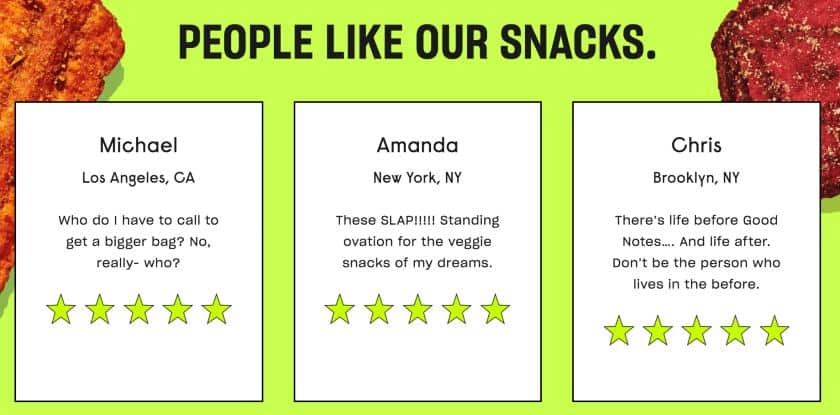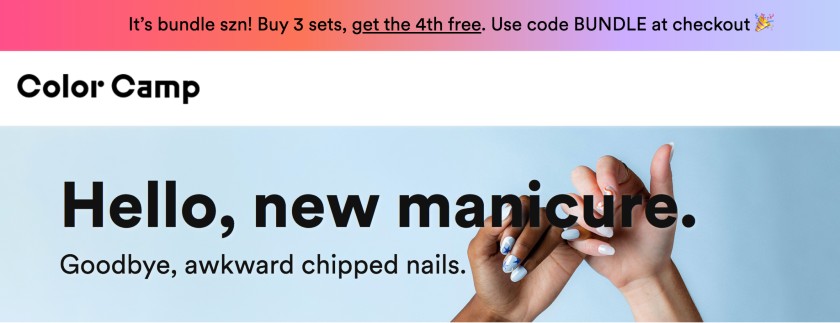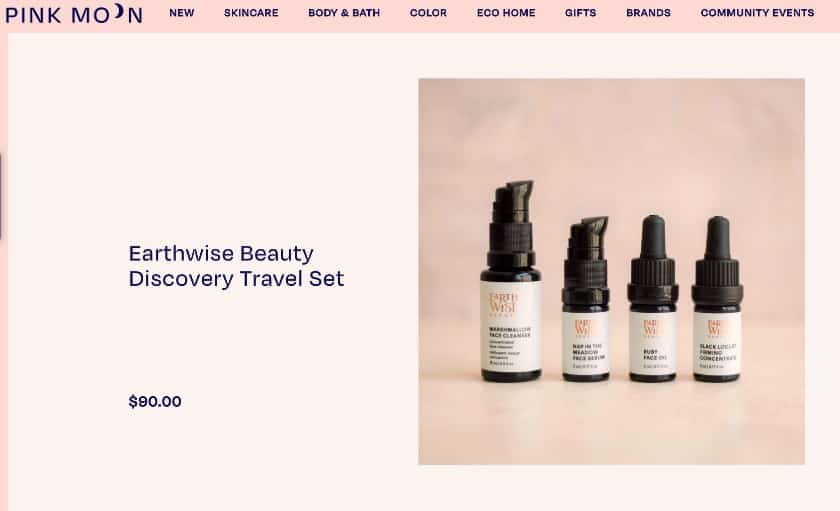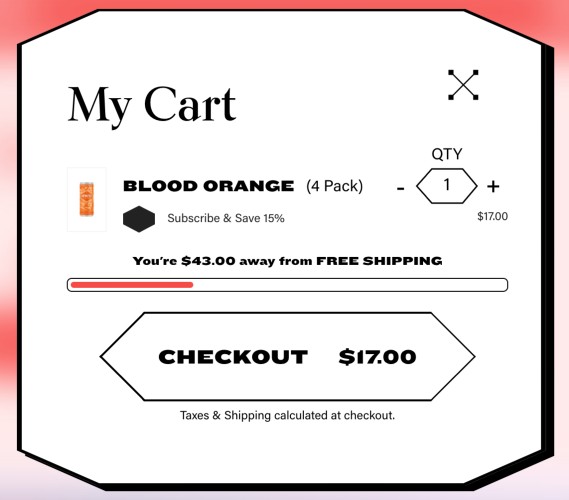This year, Cyber Monday is happening on December 2nd. A short holiday season (only 27 days between Thanksgiving and Christmas) and an uncertain economy will lead shoppers to wait for big sale events like Cyber Monday.
Cyber Monday Strategies, Trends & Tips for SMBs
This article is part of a larger series on Retail Management.
Since it was introduced, Cyber Monday has been one of the biggest online shopping days of the year. With 67% of consumers planning to do the bulk of their holiday shopping online, adopting Cyber Monday strategies is crucial whether you have a brick-and-mortar store or sell exclusively online.
In this guide, I list my recommended small business Cyber Monday strategies and marketing tips to improve the shopping experience and drive sales.
1. Be (Truly) Holiday Ready
Cyber Monday (and the whole stretch of the holiday season, actually) is a huge opportunity to acquire new customers, increase brand visibility, and maximize sales—since winter holiday sales account for 19% of retail sales, according to the National Retail Federation (NRF). As such, you need to prepare your business systems—product sourcing, logistics, marketing, and merchandising—for the influx of customers. It’s really going to be a busy season.
Take Action
As they say, preparation is key to success. Analytics is going to be your best ally. Organization will also play a big role since promotions have many moving pieces.
- Review previous sales data. Identify purchase trends, peak shopping times, and popular products. Look through your ecommerce platform’s sales reports to get information.
- Look through customer feedback. These data can provide deeper insights into your customers’ behavior so you can create more personalized promotions. Use these insights to decide your strategies.
- Assess your competitors’ past promotions. If you have access to last year’s deals, it might be a good idea to review and evaluate them.
- Map out your sales promotion ideas. Have an outline of all the sales and promotions you want or wish to roll out.
- Plan your promotion rollout. Schedule sales start dates and prices, especially if you are doing flash sales.
I outline more tips on how to be truly prepared for the holidays based on forecasts about holiday spending this year in my retail holiday readiness guide.
2. Lean Into the Early Shopping Trend
Historical reports from the NRF indicate early shopping is becoming the norm because consumers are conscious of their budgets and want to spread out their spending. You might as well leverage the trend and start early, too. In fact, almost one-third of holiday sales usually take place in October according to Experian.
Take Action
I recommend hitting two birds with one store—create exclusivity while building anticipation. Tease out early access or exclusive discounts to anybody who’s on your email list, so you will get email sign-ups and be able to build relationships far longer than Cyber Week.
- Start promotions early. Build anticipation by announcing your deals early through your sales channels. I recommend starting as early as late September—27% of shoppers start buying holiday gifts as early as October.
- Launch campaigns. Offer sneak previews, VIP access, and early-bird discounts to your email subscribers and social followers.
- Reward loyalty: Offer early access to your VIP customers or newsletter subscribers.
3. Make Your Website (More) Shoppable
Cyber Monday is the online equivalent of physical stores’ Black Friday events, so it is natural that you ready your ecommerce site. Retailer websites experience up to 63% traffic spikes during Cyber Week. And this is not only for shopping, an overwhelming 92% of customers do research before buying, starting as early as September.
These figures mean that aside from recommended ecommerce website design principles, it is also crucial that your online store holds complete and easily digestible information about your Cyber Monday deals.
Take Action
Before Cyber Monday, ensure you check off these action items in your list:
- Create dedicated Cyber Monday landing pages. Part of effective Cyber Monday advertising is building a slick-looking and on-brand landing page that pushes shoppers to purchase from your store.
- Make a retail gift guide. Choosing the right gift is a common struggle for holiday shoppers. Giving customers some much-needed gift inspiration can help encourage them to buy targeted products and make the overall purchase process more hassle-free.
- Put deals front and center. Don’t make shoppers hunt for your promotions once they’re on your site—they may quickly lose interest and head to a competitor. Put your Cyber Monday promotions front and center on your homepage and along top and side banners throughout your site.
- Have a site search in your store, but make it smart-driven. Nosto reports that 69% of online shoppers go straight to the search bar when visiting ecommerce sites, but 80% leave due to a poor experience. Ensure relevant search results are included.
- Add a wish list feature. A recent survey showed that 44% of consumers use wish lists to track price drops. By activating this feature, you are helping customers secure the best deals and monitor your price drops.
- Play up your reviews. Having reviews displayed on your site allows shoppers to see past customers’ positive opinions of your brand. Try labeling certain items as a “five-star product” if they have five-star reviews. Put positive reviews and testimonials right in your product description for promotional items.
- Add a chatbot to your online store. Adding a chatbot to your website helps ensure every visitor receives assistance, no matter how swamped your in-house employees are. Chatbots can also quickly point users to relevant products and company policies. You can also set them up to answer basic questions about shipping or product specs.
- Prepare for an increase in website traffic. Since you are going to do full-on Cyber Monday marketing, the last thing you want is to lose sales or have frustrated customers because your site crashes. Most ecommerce platforms run on systems that quickly respond and adjust to traffic demands. To be safe no matter what platform you use, though, contact your provider and ask for flexible bandwidth so your site can handle any traffic spikes that come your way.
And during your sale events, make checking out a breeze for your customers. Getting customers on your site and clicking “Add to Cart” is only half the battle. On average, around 70% of online retail orders are abandoned altogether. And cart abandonments during shopping holidays tend to be even slightly higher. Learn how to further optimize your checkout page with our checkout optimization tips, and read below for some strategies for reducing cart abandonment rates on Cyber Monday:
- Be clear on promotional pricing. To prevent customers from losing interest because of unexpected costs, be specific with your pricing language. That way, you eliminate the risk of misinterpretation or shoppers getting frustrated and leaving their orders.
- Employ a one-page checkout and allow guest checkouts. One-click checkouts like Shop Pay make checkouts happen in seconds because it doesn’t require customers to enter their information anymore.
- Offer multiple payment options. In addition to accepting all major credit cards and offering BNPL, it’s helpful to accept PayPal and Apple Pay too. That way customers don’t have to enter their credit card information if they prefer not to.
Beauty Pie makes it easy for customers to see when they can expect their order.
4. Provide Competitive Discounts
It goes without saying that you need to give great discounts—88% of consumers say it’s the factor that carries the most weight in purchasing decisions. As a small business, Cyber Monday deals can get tricky, as shoppers expect deep discounts during Cyber Monday but you also need to protect your profit margins. Last year, the average discount was 31%—standing out can be challenging.
TapCart’s report on the latest consumer trends for Black Friday-Cyber Monday (BFCM) season revealed that discounts and buy-one-get-one (BOGO) deals are their preferred promotional offers while the expected minimum discount for purchase considerations are 20% to 25% for boomers (42%) and Gen-Xers (33%), 25% to 30% for millennials (28%), and 30-35% of 17% of Gen-Zers.
There are ways to hit all three of these, though—protect your profit margins, give competitive discounts, and stand out from the competition. You can see all my recommendations below.
Take Action
- Offer tiered discounts like “Spend $75, get 10% off; Spend $150 get 20% off” to encourage higher order values.
- Create bundle deals. Similar to tiered discounts, bundles are a great way to increase the average order value while providing shoppers with added value. Use this Cyber Monday strategy to promote new products or move slower-moving inventory to help clear out excess and seasonal products by bundling them with bestsellers. Bundles can also function as a mini gift guide.
- Offer exclusive deals for loyal customers, newsletter subscribers, social media followers, or app users.
- Launch BOGO (buy-one-get-one) deals. BOGO deals, like bundles, are an opportunity to move dated, out-of-season, or dead stock. Customers will be more inclined to purchase these items when they are on sale, even if they aren’t selling at full price.
- Offer a free gift with purchase. With this strategy, either with a specific purchase amount or with the purchase of a specific product, you offer customers a free gift. The gift can be a mystery or a set item, or you can give shoppers the opportunity to choose from several items. Alternatively, you can include product samples as a gift with purchase. This gives customers the chance to discover new items in your catalog, encouraging future sales.
- Feature limited edition products. Limited edition products trigger consumers’ fear of missing out (FOMO). Capitalize on this by making limited edition products exclusive to loyalty program members, adding them to bundles for higher cart values, or giving them for free by hitting a minimum spend requirement. Don’t forget to build hype by teasing the limited edition products leading up to Cyber Monday.
- Implement flash sales. Similar to FOMO, scarcity is also one to drive a sense of urgency and drive impulse purchases. Announce flash sales on social media to attract customers to shop, and keep them returning by running multiple flash sales on different products throughout Cyber Monday.
- Promote gift cards. Gift cards attract customers who are on the fence about what to buy and don’t have anything planned to purchase. Highlight the convenience of giving a gift card as a present this holiday season, provide incentives to buy by giving a discount or bonus card, and place them prominently on your website and emails.
- Offer price comparisons and show markdowns. To provide more incentive to buy, help your customers out by comparing prices and deals across your site. To take it up a notch, you could even compare industry-wide prices to show how your brand is offering the best value deals on top-quality products.
When executing promotional Cyber Monday ideas, know ahead of time whether your ecommerce platform can implement it seamlessly. Deals like bundles, free shipping, product recommendations, and more can be easily done in an ecommerce platform like Shopify. Our picks for the best ecommerce platforms mostly have built-in features that make it easy to offer one or more of these promotions on your site and push them out across other online sales channels like Amazon and Facebook.
5. Set Your Holiday Fulfillment & Shipping Strategy
Since this is an online event, fulfillment and shipping should heavily factor into your Cyber Monday marketing strategy. Set up your holiday shipping strategy during the busy Cyber week—decide what you can offer to customers that might help increase sales, like free shipping at a minimum spend or activate click and collect with your physical store or a partner retailer.
These days, consumers expect fast AND free shipping—62% expect their orders to arrive in less than three days. Expedited shipping Expedited shipping often refers to overnight or two- to three-day delivery and is more costly than standard shipping. may also help increase sales but can be more expensive. Last year, 80% of online orders opted for standard shipping as consumers sought free or affordable fulfillment.
I want to stress transparency on shipment transit times, though, as customer retention will heavily rely on the post-purchase experience, especially for holiday-related purchases. Over-communicate about delays, whether due to the courier or other issues that may hold up their orders.
Take Action
- Make sure your fulfillment centers are prepared. If shoppers are ready to spend more, then you also need to make sure your stock and fulfillment locations are able to handle the increased demand. Set expectations with your fulfillment team and give them detailed instructions on how to fulfill sale items like BOGOs and bundles.
- Offer free shipping. If your store normally charges for shipping, try offering free shipping on certain items or at a certain order price point (spend $25, get free shipping) as your Cyber Monday promo. Make the threshold to qualify for free shipping at or just above your average sale. Providing free shipping at a certain order amount will help bump up potentially low-value orders, increase basket size, and increase customer satisfaction.
- Embrace click and collect. Last year, 12.7% of online orders on Cyber Monday were from buy online, pick up in-store (BOPIS). By embracing options like click and collect (also referred to as ‘BOPIS’), you’ll show customers you’re willing to make life easier for them and go the extra mile.
- Set clear expectations on shipping and delivery timeframes. Be sure to offer a wide variety of shipping methods: ground shipping, two-day shipping, and overnight shipping with clearly labeled pricing for each. Also, be sure to provide estimated arrival dates or at least timetables for when shoppers can expect their orders to arrive. (Related: FedEx vs UPS vs USPS: Which carrier is best for small businesses?)
- Establish and display your return policy throughout your site and on checkout pages. Baymard’s survey reveals that 12% of shoppers abandon carts because of an unsatisfactory return policy. This number is likely even higher during the holiday season when items are being purchased as gifts. It’s crucial to have a clearly stated return policy so that shoppers know what to expect. Include the return policy on your checkout screen and in all digital receipts. Additionally, it’s worth considering a more lenient policy for the holiday season. If shoppers are buying Christmas gifts on Cyber Monday, the recipient won’t even be given the gift until almost 30 days later. Offer at least a 60-day window to ease shoppers’ minds and minimize customer service issues.
Spritz Society offers free shipping for orders over $60 and features a visual aid to show customers how close their basket is to reaching the threshold.
6. Leverage Tap to Buy on Mobile
Last year, mobile shopping overtook desktop for the first time during Cyber Monday with 59% of online sales coming through a smartphone (compared to 55% in 2022). I don’t see this trend going away for this year’s online shopping event as most age groups prefer shopping from their phones—70% of millennials, 54% of Gen Z, and 58% of Gen X.
Ensuring your website is designed mobile-first is crucial for conversions. There’s also the need to consider the seamless transition across all devices (desktops, laptops, tablets, and phones) to ensure a smooth shopping experience.
Take Action
- Prioritize mobile usability and accessibility. If your website is designed with a mobile-first perspective, it becomes more than just mobile-responsive, it also becomes intuitive and has lightning-fast load times. Have simplified navigation, larger buttons, and one-click checkouts to enhance user accessibility and boost conversion rates.
- Integrate mobile payment solutions like Apple Pay and Google Pay. This makes checkout go faster and more secure. Learn how mobile payments can work for your small business.
- Invest in developing a mobile app. Once you have a mobile app, you can incentivize app usage by offering exclusive deals to app users.
Related Reads:
- What Is Mobile Commerce? How It Can Help Your Business
- Biggest Mobile Commerce Trends + Stats
7. Get Social on Social
Social media is fast becoming the top search engine and ecommerce platform. When I wrote my social commerce stats article, I found out that one in four consumers prefer to discover new products through social media over any other channel and there were 106.8 million US consumers bought from social media in 2023. And, the annual sales per social media buyer is nearly $630.
The sheer number of consumers shopping on social media and the high amount of spending signal trust and increasing preference for in-app purchases in social channels. Add the fact that consumers use social media to do product research, and you know your business should maintain a social media presence on any of the social platforms—Facebook, TikTok, Instagram, and Pinterest.
Take Action
- Embrace social commerce. Turn on shoppable posts—utilize features like Instagram Shopping or create a TikTok Shop to streamline the purchasing process directly from your posts.
- Collaborate with influencers. Work with influencers and include influencer marketing campaigns in your Cyber Monday promotions—it can drive revenue by up to 6.5 times. Influencer marketing isn’t just for big brands—it’s also an excellent way for your small businesses to reach niche audiences. You can work with niche influencers (they are usually less expensive) who create content for your specific target audience on blogs or social channels like Instagram and YouTube.
- Run a social media giveaway. Giveaways are often used as a marketing tool to drive engagement and increase reach. You can ask followers to like, comment, and share for a chance to win. Feature your bestsellers or new arrivals in the giveaway.
8. Use AI for Personalization
Personalization is one of the biggest online shopping trends this year, and retail can leverage this trend with the help of artificial intelligence (AI). Don’t be too wary of AI, consumers are excited by the idea. Adobe reports that more than half of consumers (58%) believe generative AI has already improved the online shopping experience, and around half (52%) are likely to use generative AI tools to help with clothing purchases.
You can certainly leverage AI for Cyber Monday. New Adobe Analytics research also revealed that online traffic to retail sites jumped 304% year-over-year (YoY) because of generative AI tools, further validating that consumers are excited and open to using AI to leverage their shopping experience online.
Take Action
- Enable AI search on your website. The same Adobe report revealed that 40% of consumers are excited about AI helping them automatically filter products based on what they need.
- Send customers personalized deals. Sixty-six percent want brands to use their purchase history and data to make their shopping experiences more relevant to their needs. Leverage AI tools for data analytics and segmentation, based on their browsing history, preferences, or past purchases.
- Display summary reviews on your product pages with AI. Customers (37%) want and are more likely to read summarized product reviews.
- Have a virtual fitting room. Seventy-one percent of consumers believe using generative AI to produce images of them wearing a product can boost their confidence in making a purchase. Explore how to implement virtual reality in retail.
9. Offer Flexible Payment Options Like BNPL
Buy now, pay later (BNPL) will continue to drive holiday spending this year amidst belt-tightening among consumers. Last year, shoppers used BNPL to pay for $940 million worth of online purchases—a 42.5% year-over-year (YoY) increase from 2022. Consumers used the payment option to be able to purchase more, as seen by the average BNPL spend of $598 per user, vs $452 non-BNPL users.
Twenty-one percent of all consumers would consider using BNPL to make their holiday budgets go further, so offering flexible payment options can help your customers spend more.
Take Action
- Set Up BNPL. AfterPay’s survey revealed that shoppers used BNPL last year primarily to help them budget and manage money. Shoppers can shop more (without having to worry about having enough payment for now) and you can boost sales. Learn how to offer customer financing and explore our recommended top BNPL apps.
10. Promote Where Your Audiences Are
Now that you have a great deal for Cyber Monday, it’s time to do some Cyber Monday advertising. To get the results you want, advertise where your shoppers would normally look for deals. These days, the effectiveness of advertising channels varies significantly across generations. Hence, generational differences should inform your channel strategy.
TapCart survey revealed the following preferences for each generation:
- Gen Z is highly influenced by TV ads, social media ads, and influencer content. Social media app shopping is also prevalent in this age group so it’s not a surprise that Gen Z-ers learn about sales through TikTok.
- Millennials, on the other hand, consider TV ads, social media influencers and ads, and promotional email content as the most influential. They prefer digital interactions and a mobile-first experience.
- Gen X and baby boomers find email, TV ads, and print ads the most persuasive. Email and TV ads remain a consistent source of sales information.
The trend is clear: people gravitate toward the mediums where they feel the most fluent.
Take Action
- Align your channels with generational preferences to ensure your marketing campaigns are more personal and impactful. Moreover, picking the right channels when promoting your Cyber Monday deals can make all the difference during a highly competitive sales and ad season. Have a younger audience? Focus on TikTok and Instagram, and influencer content. Older audiences? Go heavy on email.
- Omnichannel promotion strategies are a must. Promote heavily on social media, but don’t forget to send regular emails to your subscriber list.
- But focus on your highest-converting sales channels. A few weeks before Cyber Week, I recommend focusing on promoting your core products, which customers will already recognize, especially considering a lot of consumers wait until BFCM to make their purchases. Heavily promote them where your target audience is. Brand awareness should have happened months before.
- Have retargeting strategies in place during Cyber Monday. Focus on retargeting strategies alongside channels like email, SMS, and push notifications, to keep new buyers engaged.
For a full guide on this, read our article on ecommerce marketing ideas. You can also learn specifics about advertising in different channels and marketing using different media in our guides below.
11. Focus on Customer Retention
While Cyber Monday is a great opportunity to get in front of new customers, existing customers are 50% more likely to try new products and typically spend 31% more on average—so it’s important to hang onto previous customers.
Take Action
Here are a few Cyber Monday strategies to increase customer retention:
- Provide stellar customer service. Roughly 50% of customers say they would switch to a new brand after one bad customer service experience. Most customers (93%) are likely to make repeat purchases with companies that offer excellent customer service.
Having top-notch customer service is vital, especially for small online businesses where customers don’t see you in person, and you don’t have the credibility of a large brand to stand behind. Some simple ways to provide great online customer service are:
-
- Have a phone number on your website with real people answering calls.
- Take no longer than one day to answer emails; ideally, answer all customer emails within a few hours.
- Send confirmation emails after shoppers make a purchase detailing their items, costs, and expected delivery date.
- Send another email once the order ships; alerting customers during each step of the process adds transparency and helps build trust.
Since you are expecting a surge in demand and website traffic, prepare your staff well for the situation. If you need to hire additional temporary staff to handle the surge, go for it. You may need to update your refund and returns policy or change delivery timelines for Cyber Monday, so make sure your customer service team is apprised of any changes.
- Collect contact information for future campaigns. Keeping in touch with customers allows you to inform them of new products, promotions, or other news they might be interested in. Most online stores have some type of box or form for customers to sign up for a newsletter.
Change up your email sign-up verbiage so that it’s more exciting than “Sign up for our newsletter.” Try something like “Like what you see? Get more great deals year-round.” Or, offer an incentive for signing up, like an additional discount code Then, of course, follow through with your promise of great deals by sending out emails with additional holiday sales and new year promotions.
- Extend your store hours. While Cyber Monday is an online shopping event, some shoppers may discover your online promotions and want to see your products in person before making a purchase—causing a slight uptick in brick-and-mortar traffic. For that reason, it’s a good idea for brick-and-mortar retailers to extend their store hours and ensure enough staff members are on duty to help customers in person. Consider extending your hours throughout the following week too for those shoppers who missed out on a deal.
12. Prepare for Next Year
Hopefully, by following all of these tips, you’ll experience record-breaking Cyber Monday sales. But—believe it or not—once the holiday season is over it’s already time to start planning for next year. You can never prepare too early. And starting preparations promptly will get you ahead of the competition.
Here are some Cyber Monday strategies to prepare for 2025:
- Beef up your social media brand presence. Take the same concepts you used to create your Cyber Monday sales posts and use them to showcase your products year-round. By scheduling your social media posts ahead of time, you can keep an active page by just investing a few hours a week. More followers on social media equals more eyeballs for your next Cyber Monday ideas for promotion. So, work on building followers throughout the year so that next year’s promotions have an even greater impact.
- Gather more user reviews. Online reviews are social proof and help build trust among consumers. Nearly 50% of consumers say they trust the reviews they read online as much as personal recommendations. Reviews also help shoppers understand what makes your product or service stand out from the competition. Learn more about how to use these reviews in our ultimate guide to user-generated content for ecommerce.
Cyber Monday Frequently Asked Questions (FAQs)
Consumers shop online during Cyber Monday because it’s a 24-hour online shopping event that happens on the Monday after Thanksgiving. It’s like an extension of Black Friday which normally happens in stores.
According to Adobe, clothing is the most sold product on Cyber Monday. Other prominent sales categories include appliances, toys, furniture, electronics, jewelry, and sporting goods.
Retailers participate in Cyber Monday to get a boost in sales.
Yes, it does. Cyber Monday 2023 was the biggest online shopping day of all time, beating out 2022 Cyber Monday by nearly 10%. Americans spent a total of $12.4 billion during Cyber Monday.
Yes, retailers give deep discounts for online sales.
Bottom Line
Last year’s Cyber Monday numbers clearly show how important this holiday event is for retailers and online merchants. Among the key dates, online shopping is over 3x more popular than in-store shopping for Cyber Monday. This makes Cyber Monday a prime day for online offers and launch promotions.
Standing out from the crowd on Cyber Monday isn’t always easy, especially for a small business. You need to have clear Cyber Monday strategies and make your offers irresistible to your target audience.
Effective advertising, compelling deals, and a smooth shopping experience are all essential components of a successful Cyber Monday. Approach Cyber Monday with a step-by-step strategic approach and see what results you can drive.






